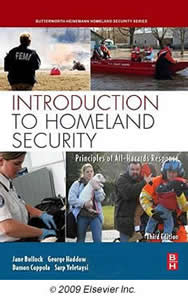Introduction to Homeland Security - Chapters 1 and 4
Chapters 1 and 4 of your primary text, “Introduction to Homeland Security,” provide a brief historical overview of the evolution of U.S. emergency management and homeland security organizations, legislation, and the philosophical emphasis of the discipline.
Chapter 1 attempts to furnish a foundational argument for an all-hazards approach to emergency management as opposed to single-minded concentration focused on the terrorist hazard. As you read through this chapter, I want you to pay particular attention to the paradigmatic shifts that have taken place within the discipline as a result of changing political philosophies and frequently as the result of tragic history-defining events.
Despite the efforts of the authors in Chapter 1 to focus on an all-hazards approach to emergency management, in Chapter 4, they solely introduce you to the four broad categories of terrorist related hazards: chemical, biological, radiological/nuclear; high explosives (CBRNE), as opposed to other man-made or natural disasters. However, it is important to note that from the first responder’s perspective, many of these hazards will be planned for, mitigated, responded to, and recovered from in exactly the same manner regardless of how the incident was precipitated, either accidentally or intentionally.
In general, the two chapters provide a good baseline and appreciation for the establishment and maintenance of well-organized, staffed, coordinated, equipped, and trained, emergency management and homeland security systems and structures.